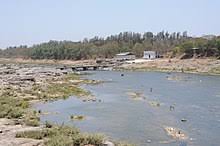Exploring Dadra and Nagar Haveli: Culture and Significance

Introduction
Dadra and Nagar Haveli, a Union Territory of India, holds a significant place in the country’s diverse tapestry. Located between the states of Gujarat and Maharashtra, it is a region known for its rich cultural heritage, stunning landscapes, and historical importance. The recent political developments and administrative changes have brought this territory into the spotlight, making it relevant for both tourists and researchers alike.
Geography and Demographics
Dadra and Nagar Haveli spans an area of approximately 491 square kilometers and has a population of over 600,000, according to the last census. The territory is characterized by lush green forests, beautiful hills, and a network of rivers, making it an attraction for nature lovers. The main languages spoken here are Gujarati, Marathi, and Hindi, reflecting the multicultural fabric of the area.
Historical Significance
The region was historically an enclave of the Portuguese until 1954 when it was liberated by Indian nationalists. This rich history is evident in various architectural structures, including old churches, forts, and traditional tribal villages that tell the story of resistance and resilience. The cultural amalgamation is enhanced by the presence of multiple tribal communities who maintain their distinct traditions, adding vibrancy to the local culture.
Tourism and Culture
Tourism in Dadra and Nagar Haveli has witnessed a boom post its designation as a Union Territory in 2020. The administration has been focusing on promoting eco-tourism and sustainable travel. Attractions like the Vanganga Lake, Dadra Garden, and the Tribal Cultural Museum showcase the region’s natural beauty and tribal heritage. Festivals such as the ‘Dussehra’ and ‘Holi’ reflect the deep-rooted culture, where locals participate enthusiastically, inviting tourists to join in the celebrations.
Conclusion
As Dadra and Nagar Haveli continues to evolve, it stands as a testament to India’s rich cultural and historical narratives. The territory’s growing emphasis on tourism and sustainable development presents opportunities for economic growth while preserving its unique identity. For readers, understanding this region’s significance adds depth to India’s diverse heritage, enticing both adventure seekers and cultural enthusiasts to explore its charm further. With future investments being directed towards infrastructure and tourism, Dadra and Nagar Haveli is poised for notable developments in the coming years.









